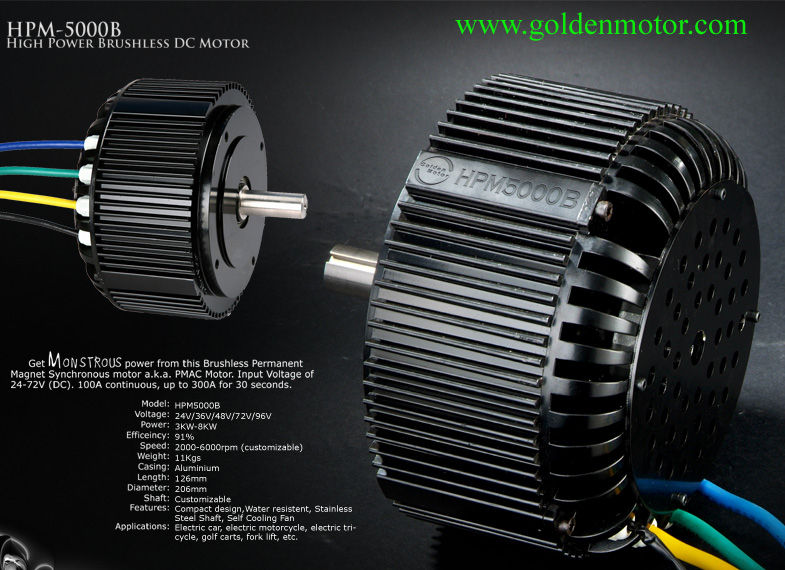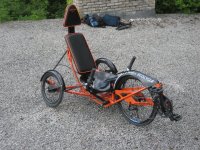I couldn't resist one of these hubs to replace the 8 speed deraileur on my 4kw 80-100 powered Stinky :
http://endless-sphere.com/forums/viewtopic.php?f=28&t=12768
With the old setup, the chain and rear sprockets wore out quickly and then would often slip in the higher gears with too much load.
I am hoping the ability to use BMX chain and a 1/8th " wide sprocket with a straight drive line will sort this issue.
I plan to develop a gadget that will allow selection between Manual or Auto gear shifting this hub on the fly, (which you can select while riding).
The stock system seems to cater for either one or the other, because they each require different configuration files to be loaded into the shifting servo.
For Auto mode, the wheel speed signal would be passed to the servo as normal, and shifting would take place as defined by the shift tables.
For Manual mode, the wheel speed signal would be synthesized by a microprocessor (a re-programmed verion of the TA2 board), the apparent wheel speed could be controlled by a pair of up/down buttons on the handlebar, forceing the servo to change gear when you want to, just like a sequential gearbox control

In Manual mode we could add refinements like:
1) Auto shift to low gear when stopped
2) An led display to show which gear is selected
All this stuff is a few weeks away, I am still trying to get some ideas straight. Tomorrows job is to have a go at laceing the hub into a wheel :?
Once I have this feature developed, I should be able to make it available to all who want it, meanwhile if you have any ideas for similar features you think might be useful, then I am all ears!
Burtie
http://endless-sphere.com/forums/viewtopic.php?f=28&t=12768
With the old setup, the chain and rear sprockets wore out quickly and then would often slip in the higher gears with too much load.
I am hoping the ability to use BMX chain and a 1/8th " wide sprocket with a straight drive line will sort this issue.
I plan to develop a gadget that will allow selection between Manual or Auto gear shifting this hub on the fly, (which you can select while riding).
The stock system seems to cater for either one or the other, because they each require different configuration files to be loaded into the shifting servo.
For Auto mode, the wheel speed signal would be passed to the servo as normal, and shifting would take place as defined by the shift tables.
For Manual mode, the wheel speed signal would be synthesized by a microprocessor (a re-programmed verion of the TA2 board), the apparent wheel speed could be controlled by a pair of up/down buttons on the handlebar, forceing the servo to change gear when you want to, just like a sequential gearbox control

In Manual mode we could add refinements like:
1) Auto shift to low gear when stopped
2) An led display to show which gear is selected
All this stuff is a few weeks away, I am still trying to get some ideas straight. Tomorrows job is to have a go at laceing the hub into a wheel :?
Once I have this feature developed, I should be able to make it available to all who want it, meanwhile if you have any ideas for similar features you think might be useful, then I am all ears!
Burtie





